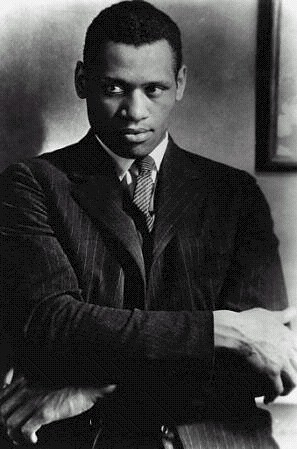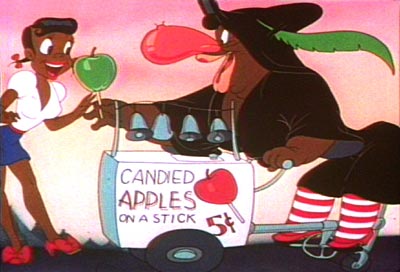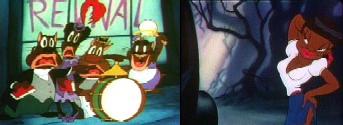 The following is based on part eleven of Jacob Bronowski’s BBC series on the history of science and invention, “The Ascent of Man” (1973). This one is about quantum physics:
The following is based on part eleven of Jacob Bronowski’s BBC series on the history of science and invention, “The Ascent of Man” (1973). This one is about quantum physics:
We used to think that science could give us a perfect picture of the material world. But we now know, because of quantum physics in the 1900s, that absolute knowledge is impossible. There is a limit to what we can know – even with the most perfect and most powerful instruments imaginable.
For example, with a high-powered electron microscope you can see atoms. Yet no matter how much you increase the power you will never get a sharp image.
Even something as simple and straightforward as the position of a star in the sky is not perfectly knowable: different human observers come up with different positions and even the same person repeating the observation does not come up with the very same answer each time.
Karl Gauss in 1795 noticed that the observations made a bell curve – the closer you get to the average position, the more observations there are. But you cannot even say that the star is at the average position – all you can say is that it is the most probable position, which is not quite the same thing as its true position.
Gauss lived in Gottingen, a small German university town. It was here, over a hundred years later, in the 1920s, that some of the leading minds of physics came on the train from Berlin to work out the physics of the atom and its parts: quantum physics.
The atom is made of moving parts, such as the electron, and yet there is something very strange about them. Werner Heisenberg in 1927 found that you can tell what the position of an electron is but not its speed and direction – or, if you nail down its speed and direction, then you cannot tell its position. It is one or the other but never both at the same time. This is Heisenberg’s Uncertainty Principle.
Gottingen had something else: a collection of skulls. These skulls were used to support a racist view of the world, a view of the world that dealt in inhuman certainties. It came to power in the person of Hitler. The skies darkened over Europe, as they had in the days of Galileo. The great minds of Europe fled – or fell silent:
It’s said that science will dehumanize people and turn them into numbers. That’s false, tragically false. Look for yourself. This is the concentration camp and crematorium at Auschwitz. This is where people were turned into numbers. Into this pond were flushed the ashes of some four million people. And that was not done by gas. It was done by arrogance, it was done by dogma, it was done by ignorance. When people believe that they have absolute knowledge, with no test in reality, this is how they behave. This is what men do when they aspire to the knowledge of gods.
See also:
- Jacob Bronowski: Into this pond were flushed the ashes of some four million people – the conclusion of this part
- Jacob Bronowski: World Within World – part ten
- Jacob Bronowski: The Starry Messenger – about Galileo
- Hitler


 Genocide (1943) is like homocide, but where homocide is the murder of one man (Latin, homo), genocide is the murder of a people (Latin, gens). Like what Hitler did to the Jews, what Americans did to the American Indians or what the Hutus did to the Tutsis in Rwanda in 1994.
Genocide (1943) is like homocide, but where homocide is the murder of one man (Latin, homo), genocide is the murder of a people (Latin, gens). Like what Hitler did to the Jews, what Americans did to the American Indians or what the Hutus did to the Tutsis in Rwanda in 1994. Killing soldiers is not genocide – that is just war. But killing women and children and old men – unarmed people – just to wipe them out because of their race, religion, country or culture – like Jews, Armenians and Tutsis – that is genocide.
Killing soldiers is not genocide – that is just war. But killing women and children and old men – unarmed people – just to wipe them out because of their race, religion, country or culture – like Jews, Armenians and Tutsis – that is genocide. Tirailleurs Senegalais (1857-1960) is French for “Senegalese sharpshooters”. It sounds like “Tear-a-year Senegalay”. It was the name for the French Empire’s black army from West Africa. You do not hear about them much, but about 200,000 of them fought in both world wars of the 1900s. They were at Gallipolli and the Somme, for example. They also fought for the empire in Morocco, Vietnam, Syria and Algeria. Despite the name, most were not from Senegal. Many came from what is now Mali and Burkina Faso.
Tirailleurs Senegalais (1857-1960) is French for “Senegalese sharpshooters”. It sounds like “Tear-a-year Senegalay”. It was the name for the French Empire’s black army from West Africa. You do not hear about them much, but about 200,000 of them fought in both world wars of the 1900s. They were at Gallipolli and the Somme, for example. They also fought for the empire in Morocco, Vietnam, Syria and Algeria. Despite the name, most were not from Senegal. Many came from what is now Mali and Burkina Faso. Paul Robeson (1898-1976) was an American singer, actor and a fighter for equal rights for all men. He is best remembered for singing “Ol’ Man River” (1936).
Paul Robeson (1898-1976) was an American singer, actor and a fighter for equal rights for all men. He is best remembered for singing “Ol’ Man River” (1936).







